|
I don't usually get bathed by a half-naked man I just met. But that's apparently what you do at a Turkish hamam--and frankly, I loved it. After all, Mike was right beside me, with his head and toes sticking out from under a mountain of bubbles. We were taking part in a tradition that's continued at this public bath in Istanbul, Turkey, for hundreds of years.
We were at the city's Suleymaniye Hamam, which was built in 1557 by the renowned Turkish architect Mimar Sinan for Sultan Süleyman the Magnificent, who ruled the Ottoman Empire between 1520 and 1566. Outside the very room in which we bathed was a plaque that told us the Sultan had also frequently bathed there. That made our treatment seem especially royal, even when my bath attendant, or tellak, smacked me on the back and doused me with icy cold water. I'd chosen this particular hamam not only for its history, but because it is reportedly the only one in the city that allows couples to go through the experience together--other hamams are separated by sex. At 35 euros (about $43) per person, it was also a bit less expensive than some of the other famous hamams in Istanbul. When we arrived, we were handed plaid cotton towels, a bikini top, and a pair of shorts. The man who ushered us to the changing room said, "Man wears bikini, woman just towel," and then laughed. After changing, we both were given little wooden shoes with black straps at the toes, which clip-clopped on the marble floor as we were led to the steam room. Inside it was as hot and humid as a Nebraska corn field in the summer. The surfaces were made of pale gray marble, and light poked through holes in the domed roof. It was a beautiful place to suffer. Mike said, "This isn't very enjoyable, but I like it." I knew exactly what he meant. Even my shins were sweating, but I felt like this was a good thing. After about 20 minutes or so, two tellak escorted us into a side room where they cooled us off with cold water, scrubbed us with a loofah, covered us with piles of bubbles, and massaged us until we were jello. My tellak also shampooed my hair. He seemed to punctuate each step with a slap, maybe to wake me up or perhaps he was just having fun. I was, too. Looking across at Mike, he seemed more relaxed than I've seen him in months. I smiled and bubbles popped on my cheeks. .
0 Comments
 Mike digs into a bowl of hummus at Hashem in Jordan. "Welcome to Jordan," shopkeepers, waiters, perfume sellers, and taxi drivers called out as we walked down the streets of the capital, Amman, on our first evening in the country. If we stopped to say "Shukran!" ("Thank you" in Arabic), we might get the follow-up questions "First time Jordan? Where you from?" When we said we are from the U.S., we were always welcomed again. "America good," with a thumbs up. This is probably not the reception most Americans expect from a Muslim country bordered by Iraq, Syria, Saudi Arabia, Israel, and Palestine. But Jordanians are renowned for their hospitality. Many of the residents are of Bedouin descent. A traditionally nomadic ethnic group, the Bedouin have long endured life in a bitterly dry and hot landscape, in part through their honor code of diyafa. Every traveler, even an enemy, must be offered shelter, food, and protection if she or he approaches a Bedouin tent in the desert. In the modern city of Amman, diyafa showed up in a handful of salted melon seeds our taxi driver passed back to us without a word. On our walk to dinner, a vendor gave us a free taste of a freshly cracked almond--he broke the shell with his hands--and a dried fig covered in powdered sugar. At the outdoor eatery Hashem (where I had the most creamy, garlicky, spicy, delicious hummus of my life), the table next door passed over a falafel ball stuff with onions and peppers. They hardly paid attention as we ate it, as though we were already members of their family. The waiter, Said, wearing a muscle T-shirt and a big toothy smile, shook my hand. "Welcome to Jordan," he said. To get to Dubai from Muscat, we bused through northern Oman, past flatlands of bone white desert and scrubby, half-dead trees. Outside it was about 115 °F. If heat had a physical form, it would be this landscape. Once in the United Arab Emirates--which consists of seven independent city-states, including Dubai--we passed a road sign indicating a camel crossing. Far in the distance of this dry, hot world, I saw two tall, golden, humped shapes nibbling on the shrubs.
Dubai surfaced from the emptiness like Las Vegas does. All of the sudden, freeways snaked around us. McMansions fronted the roads. Shopping malls hulked. Silver-paned skyscrapers watched over it all with cool, elegant indifference. It wasn't until sunset, when we explored the area around our hotel, the XVA, that I realized I might actually enjoy this city. Dubai is divided by a "creek," which is really a large inlet from the Persian Gulf. Walking along it, we watched the criss-crossing of water taxis, each one filled with a collection of women in black-robed abayas, men in the long white shirt-dresses called dishdashas, and tourists in their mishmash of T-shirts and sports sandals. Old wooden dhows crowded the banks, and behind them stood the blocky modern buildings of banks, including one from Iran, located just across the Gulf. People from all over the world passed by us, wearing colorful saris, headscarves, floppy hats, and taqiyah (Muslim caps). With the skyscraper lights starting to glitter on the water, the scent of jasmine and frankincense perfume in the air, and the sound of the call-to-prayer undulating from the nearby mosque, I felt I had been transported to the capital of another planet and another time. The Mos Eisley Cantina from Star Wars might have been just around the corner. There's a reason why Dubai feels so otherworldly. More than 80 percent of the city's population is foreign-born, with especially large groups of immigrants from India, Pakistan, Bangladesh, and the Philippines. The result is a cosmopolitan mix that centers more on the East than the West, unlike in other bustling international cities like London and New York. After wandering down the textile souq, where rainbow piles of fabric lined the stores and vendors called out "Pashminas! 10 dirhams!," we had dinner at Bait Al Wakeel. The food was expensive and poorly prepared, but the the view was worth it. Sitting on a balcony overlooking the creek and its busy boat traffic, we felt we were in the middle of the water, with the alive, awake energy of nighttime Dubai swooshing around us. On our way back to the hotel, we followed a stream of people turning down a small alleyway. Suddenly we were in a tiny corridor, filled with Indians and little shops selling fragrant garlands of jasmine and marigolds, hundreds of tiny statues of Hindu gods, and smoky incense. Piles of shoes rested at the foot of several staircases, which led up to a temple. There were no tourists around. We had found a passage to India, a street named Hindi Lane, in the middle of the Middle East. That's when I thought, I love Dubai. Since the movie night in Malawi (last post) in March, I've gone on a walking safari in Zambia, river rafted the Zambezi in Zimbabwe, navigated the waterways of the Okavango Delta in Botswana, slept under the stars in the desert in Namibia, road-tripped through South Africa, pony-trekked in Lesotho, gotten a speeding ticket in Swaziland, boogie-boarded on the beach in Mozambique, and bought frankincense in Muscat, Oman. It's been an absolutely amazing trip. Unfortunately, wireless Internet access, which I need to complete a blog post, has either been very limited, very expensive, or very slow throughout most of this journey. I think a blog should cover relatively current information, so I've decided to begin my writing again with my most recent travels in Dubai. I'll look for another way to publish stories about my adventures in southern Africa.
Thanks so much for reading! It's been such a pleasure to share these travels with you. Jennica At the Malawian fishing village of Cape Maclear (also called Chembe), an unexpected invitation led to one of the highlights of our trip. A retired Dutch man named Gerrit van Engelen, who spends several months a year in Cape Maclear, has imported a movie projector and screen. He uses these to show children’s movies to kids under the stars twice a week. Gerrit calls this non-profit project Tipezananso (“We see each other again!” in the local language of Chichewa). In March, Gerrit was staying at the same lodge as us, Fat Monkeys, and he asked us if we’d like to join him for a screening.
We walked with Gerrit through the village of about 15,000, down the dirt road past candle-lit, thatched-roof shops selling bottled sodas, candies, eggs, and milk. The central part of the town had electricity and was buzzing with local people enjoying the cool evening air. A block away, a crowd of kids was still gathered in the last light around a swingset that Gerrit had built. We also passed by a set of monkey bars and a merry-go-round he is constructing. Gerrit told us that this is the only public play equipment in town. Nearly half of the people in Malawi live on less than $1 a day. So although about 45 percent of Malawi’s population is under the age of 15, there is little money available to buy youth the kinds of high-tech toys, backyard jungle-gyms, and Disney DVDs that are common in homes in the U.S. Cape Maclear does have a few movie houses—really just small buildings with walls of sheet metal. When we passed one we could see the light of the film flickering through the cracks and hear the soundtrack of machine guns firing and bombs exploding. Gerrit explained that these places mainly show copies of violent Western films like “Rambo” or “Terminator,” not flicks appropriate for young ones. About five minutes outside of the center of town, we reached the spot where Gerrit’s local team of helpers had already set up the projector and hung the screen against the outer wall of a store. A couple hundred kids were already sitting cross-legged on the dirt ground in front of it. They were watching African music videos. As soon as Gerrit arrived and started fiddling with the projector, the children began to cheer. They knew the real show was about to start. First up were a couple of Pink Panther cartoons. I’d never appreciated before how well these shorts entertain with so few words, almost like pantomime. The kids giggled at the Panther’s shenanigans, always outsmarting Inspector Clouseau. One scene showed the Panther getting burned by a hot water bottle. Gerrit pointed out that the kids in this warm, humid town have probably never seen a hot water bottle, but they roared at the sight of the pink cat jumping out of bed from the heat. After the Panther, Gerrit screened some home videos of the local kids on the swingset. Everyone shouted when they saw someone they knew. They were part of the show, too. By the time of the feature presentation, hundreds more children and their parents had packed in front of the small screen. The stars shown so brightly above, and Venus looked like a spotlight. Everyone got quiet when the movie started. A little girl in a torn pink dress leaned against my leg. Gerrit had hired a Malawian man to give a synopsis of the film’s storyline in Chichewa and videotaped his translation so the kids would know what’s going on. The film would be “Ice Age 3,” but the explanation seemed very serious. Everyone listened intently. The movie rolled, and creatures the kids had likely never heard of—woolly mammoths, a giant sloth, an opossum—wandered about a foreign world of snow and ice on the screen. It didn’t matter that the film’s fantasyland was about as far away from Malawi as you could get. The silliness of the characters’ movements and expressions made everyone laugh. A saber-toothed tiger appeared and was immediately the crowd favorite. It looked close enough to a lioness—a more familiar animal in Africa—that the kids giggled and shouted with great delight as it chased a gazelle and missed. It was like a jar of fireflies set free to hear those kids laugh. When the gazelle did a victory dance, it seemed the kids' hearts did, too. A lot of political changes have happened in Malawi in the two months since we visited. The unpopular President Bingu wa Mutharika died of a heart attack and his vice-president, Joyce Banda, was sworn into the office. She is now the second female president in Africa (Liberia's President Ellen Johnson Sirleaf, a Nobel Peace Prize winner, was the first). President Banda has already fired several top government officials, devalued the currency in order to regain World Bank support and aid from the U.K., and announced she will decriminalized same-sex relationships. For more information on Malawi, check out the country's page on the BBC. Peacock blue. That’s the color of the water surrounding the Tanzanian island of Zanzibar when the sun is directly above. Now, in the late afternoon, it’s more of a rich royal blue, and the graceful arc of a dhow’s sail is crossing in front of me. A palm tree’s lazy arms wave.
A Zanzibari woman named Hadigya, with a warm, patient smile, has given me my third back massage in five days here at Kendwa, a beach town on the island’s northwestern tip. She uses lemongrass-scented oil, and this time, cool water to soothe my sunburn. During the massage I thought, it’s the Zanzibar outside of the border of the postcard that I love. It’s the healing hands of Hadigya. And the conversation with the waiter Haz this morning about his life on the island—the way his eyes teared up when he told me how beautiful his three-year-old daughter is and how she can’t get enough chocolate. And the cats everywhere. They seem to belong to the buildings rather than the people, lying long and lanky in a slice of shade created by a step or a wall. Every evening at sunset in Stonetown, the island’s largest city, a group of teenage boys takes turns racing full speed at the cement ramparts that separate the land from the sea. They jump over the barrier and dive, flip, bellyflop, cannonball, or twirl into the water. As they launch into the air, their arms and legs flail wildly. There is usually no attempt at grace or form. It’s the happiest display of diving I’ve ever seen. They don’t ask for money from the crowd that gathers. They’re just plain having fun, playing with the rim of this island that’s their home. Stonetown’s alleyways and streets are slender and serpentine, and it’s a pleasure to see where they lead. It’s never anywhere that spectacular, but there are small surprises: A group of young, veiled Muslim girls playing on a stone wall, laughing, being tomboys. The frame of a wooden door so carved with flowers and Arabic script that no smooth surface is left. An old man sitting the shade who greets me with “Karibuni,” (welcome). We came to Zanzibar just in time for the Sauti za Busara music festival, a five-day celebration of African sounds that brings artists from all over the continent. A couple nights ago we saw a 90-something-year-old woman named Bi Kidude sing traditional taarab and unyago songs. Taarab is a Swahili genre that’s extremely popular on Zanzibar and often performed by a full orchestra at weddings. Unyago is associated with female coming-of-age ceremonies. The music’s rhythms are said to teach women how to please their husbands (in bed). Bi Kidude, who is so old she doesn’t even remember what date she was born, sang with passion and zest. The entire crowd gravitated toward the stage to take pictures of this still-burning star. In a way, Bi Kidude is a perfect representative of Zanzibar, an island that’s so ancient and rich with stories that it’s become a kind of legend. But it’s not a two-dimensional postcard. It’s still very alive. It’s a bit dirty. It’s hot. Teenagers go wild at night. Old women sing sultry songs. And I never want to leave. A few days ago Mike and I took a camping safari through Tanzania’s Serengeti National Park and Ngorongoro Crater. Along with us in the Land Rover were a guide/driver, a cook, and three other travelers, including an Irishman named Michael who was severely visually impaired. He is not blind, but he cannot see the faces of people standing right in front of him. His girlfriend, Fionnoula, told me later that he had come along as a favor to her. What amazed both her and me was that on this safari, the wildlife was so close—just a few feet away at times—that Michael could actually see much of it well with the help of binoculars. When Michael couldn’t see something, like a flying flock of sacred ibis, he sometimes commented on how he could still hear their noisy call. This made me think about experiencing a safari through all the senses, not just vision. So here are five snippets of our trip through their sound, smell, touch, sight, and taste.  The squeaky sound of the grass as Cape buffalo pulled it from the ground and ate it in the middle of the night just outside our tent on the rim of the Ngorongoro Crater. The buffalos huffed through their noses as they chewed. The Cape buffalo is one of the most dangerous animals in Africa, known to gore even lions with its enormous horns. So we lay very, very still.  The smell of a pod of hippos wallowing in a pond. We could catch their stinky scent before we saw them. Let’s just say that they do more than just pee in the pool. Hippos themselves have a good sense of smell and hearing, but poor eyesight. I will not be wearing Eau de Hippo anytime soon. 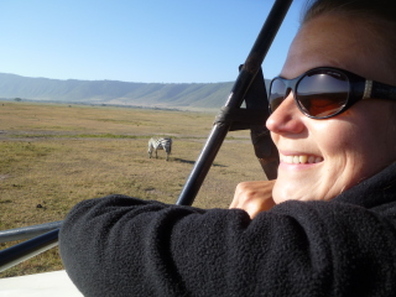 The feeling of the hot wind and sunshine on my face as I stood up and looked out of the roof hatch while we drove across the Serengeti. The word Serengeti is derived from the Maasai language and means “endless plains.”  The sight of two lionesses and three cubs resting on the road directly in front of us around dusk. We skidded to a stop. Then we learned that we had a flat tire and had to get out of the vehicle directly in front of the lions. While we nervously watched these wild cats disappear into the grass as the sun set, our guide and cook fixed the car.  Celebrating the end of our safari with Daniel Mengoriki, left, and another new friend, Laurence Masawe, far right. The smoky, savory taste of nyama choma, or barbecued beef, which we had back in the city of Arusha with our new friend Daniel Mengoriki and his cousin Evans. The beef is served in small slices on a plate with little piles of sea salt on the rim. You eat it with your right hand, along with a little ball of sticky ugali, a doughy staple made from cornmeal and hot water. All best washed down with a cold Serengeti beer. The silverback gorilla I encountered was a lady’s man. His family—one of seven habituated gorilla groups in Rwanda’s Parc National des Volcans—is called Hirwa, a Kinyarwanda word that means “lucky.” The group is named after the success of the dominant male, Munyinya, who has battled silverbacks in three other groups and succeeded in convincing a female from each one to join him in his own territory. Now they are 16: the silverback, five females, five juveniles, and five babies, including a set of twins named Isangano ("meeting place") and Isango ("appointment").
To reach the group, we had to hike partway up the Sabinyo Volcano, which had the steepest slope I’ve climbed since Half Dome in Yosemite National Park. We—our trekking group of eight, plus a guide, a porter, and an armed guide—pulled ourselves up using vertical stalks of bamboo and jungle vines. It took about two hot hours before we finally reached the group of trackers who had already located the gorillas. I was at the front by the guide, so I was the first to see a large, black, crinkled face. It quickly disappeared. The gorillas were in a ravine filled with their favored food, a celery-like stalk called Peucedanum linderi (which was very bitter but refreshingly watery when I tried it myself), and thorny trees, stinging nettles, and tangled briar. We had to climb on top of it all, since it was impossible to walk through, which had us sliding over green mattresses of jungle. When we landed on solid ground again, we were surrounded by gorillas. The silverback, Munyinya, was as enormous as an NFL linebacker times two. He kept his back turned toward us and made low rumbling sounds, which our guide, Oliver, returned. Oliver said the rumble means, “Everything’s OK.” I was filled with a sort of whipped wonder, which made my chest feel airy, buoyant. Just five feet to my left was a large mother with her two tiny twins clinging to her back, looking at us with wide eyes. Then another female ambled down a slope directly toward me. I stepped back, but she just kept coming, paying no attention to me. She brushed past my pant leg and headed down the hill. Further off, youngsters swung on one arm from tree branches. One fell down and somersaulted through the bush in a black hairy ball. We continued to slip, slide, and crunch our way down the ravine, following the silverback. I’d look in one direction, see a tall bush shaking, and then see the wrinkled face or round back of another gorilla. At times, one would look directly at us, so peacefully and non-challantly, not really caring that we were there. The hour we were there, the gorillas never seemed to stop eating. When Munyinya turned to the side, I could see him feeding four or five stalks into his mouth at once, like a combine. There was a juicy crunching sound and more low, satisfied grunts. Everything’s OK, he said. The day after the soccer match, we traveled to a beautiful lodge called Paradise Malahide right on Lake Kivu. While we were waiting for our room to be ready, we heard singing. We walked toward the adjacent village to find the source. The music was coming from inside a church with mudbrick walls and an aluminum sheet roof.
Near the road, a man wearing a silky butter yellow shirt and pressed slacks greeted us and said, “Welcome.” Although the service had started a while ago, he said we could go in. He led us up a dirt slope to the entrance. Inside, Rwandans sat on wooden benches on all four sides of the building. There must have been at least 200 people in there, dressed in beautiful bright prints and nice slacks or skirts, the women in headwraps. The choir was singing on their feet, smiling and sometimes raising their hands expressively. The language was foreign, perhaps Kinyarwanda, and the voices were high and melodic, accompanied by two men on men guitar. When the music ended, a pastor came up holding a Bible. He said a few words and then one by one, people walked up to the front table, clutching wadded bills. A man came and sat in front of us. He introduced himself and explained in English that the church was collecting money to finish the roof. I looked up and saw that the roof was indeed covering about four-fifths of the church. I could see the sky. Mike got 5,000 francs (about $8.00) from his wallet, and I walked the money up to the front. When I got there, I saw that the other bills from church members were 1,000s (about $1.60). The pastor said, “Merci! Merci! Merci! Thank you! Thank you!” All the church chuckled at his use of French and English instead of the local language. Our translator said it was time to pray, and we all held hands. A little boy, about 1 ½ years old, toddled up to me and touched my lap. He looked in my eyes. Such soft cheeks! I picked him up for a moment and turned around to see his mother holding her face and laughing. After the service, we learned that our translator’s name was John, a simplified version of a much longer Rwandan name. He held Mike’s hand as we walked and talked. (Being physically close and holding hands is normal here between men. It is simply friendly and warm.) As Mike and I walked back to the hotel, we felt so lucky to have chanced on such an intimate community gathering. That morning I wrote in my journal, “Rwanda has cracked me open. It’s created a rift in my heart, and poking through is the mushy raw emotion that traveling, if you’re lucky, exposes—a jungle-filled valley filled with the monkeys, vines, butterflies, and tall trees of joy, sadness, hope, wisdom.” A few days later we visited the Genocide Memorial Centre in Kigali, which reveals the history of tribal favoritism during Belgium’s colonial rule that helped lead to the genocide. Then the memorial’s exhibits describe in stomach-churning detail how men, women, and children were mutilated, raped, and murdered in 1994. When I left the memorial with tears in my eyes, I questioned how a nation could rebuild itself after such an event. I thought back to the soccer game and the church service and the genuine smiles that I saw on the faces in both of these places. I cannot begin to comprehend how Rwandans feel about the country’s deadly history--and this was not a topic that I wanted to bring up with the local people I met. What is clear is that, at least in some places, Rwandans continue to fully celebrate and appreciate life in a way that made me want to do so, too. In Rwanda, we spent two days on Lake Kivu, near the town of Gisenyi and Congo border. Here, some of the major tragedies of the country's 1994 genocide occurred. It’s estimated that more than 800,000 people were murdered in Rwanda within a hundred days, and thousands more were tortured, raped, and mutilated.
Before I visited Rwanda, this horrific event was about all I had heard about the country, besides the fact that some of the world’s last wild mountain gorillas live here. But the time I spent on Lake Kivu gave me a new, vibrant picture of Rwanda and its people. As we rode to Gisenyi in a local bus, we saw minibuses passing us filled with young men shouting and cheering, blowing vuvuzelas (long, loud, noise-making horns), singing, and wearing blue and white T-shirts. Some men had powdered their bodies, and they wore white clown wigs. A fellow passenger informed us that the wild men were fans of Rayon Sports, the most popular soccer team in Rwanda’s capital of Kigali. They were heading to Gisenyi for an important match with the Etincelles, another national league team. We decided that we had to go, too. Inside the stadium, nearly every space was filled, from the standing-room-only section across from us ($1.80 per ticket) to the cement benches we sat on ($3.30 per ticket). In front of me were two men in wheelchairs. One of them was missing his legs, a possible sign that he had been a victim of the genocide. I also noticed a couple young men who had severe burn scars on their faces and necks. They would have been children in 1994. The crowd was at first relatively quiet, with a few collective sighs for missed goals. But then Rayon Sports scored, and their fans stood up, threw their hands in the air and hollered. We were in a section mainly filled with fans of the Etincelles, the underdogs. When they scored, the people around us burst into cheer, gave us big high fives, and jumped up and down. A young woman in front of us did a hip-shaking dance. Little boys ran into the grass below us, imitating the goal-winning kick. Eighteen years ago, many of the people in stadium would have been personally affected by the genocide in some way. Today, they are able to enjoy a soccer game together in peace. The match ended in a tie, and the stadium poured out to local bars to have Primus beers and beef skewers. The next day, I witnessed another kind of celebration. This time, in a church. (Continued in my next post.) |
Archives
July 2012
Categories
All
|


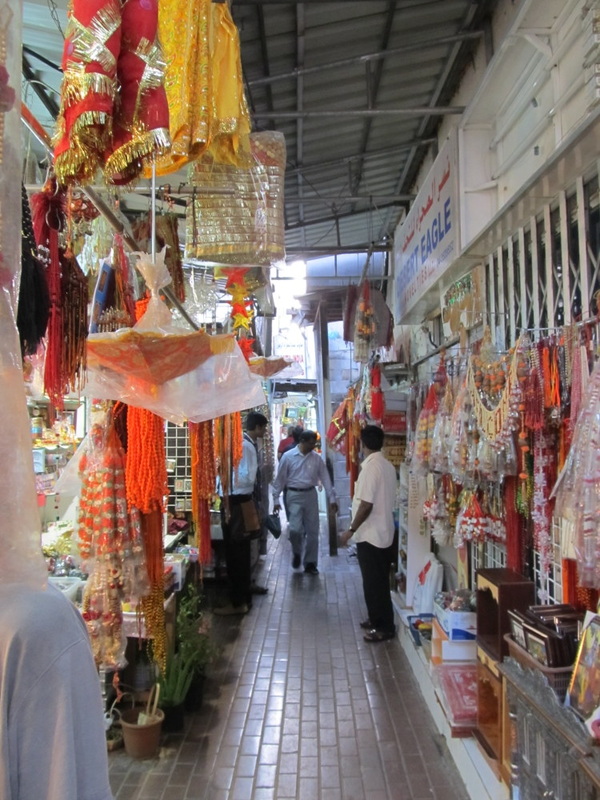


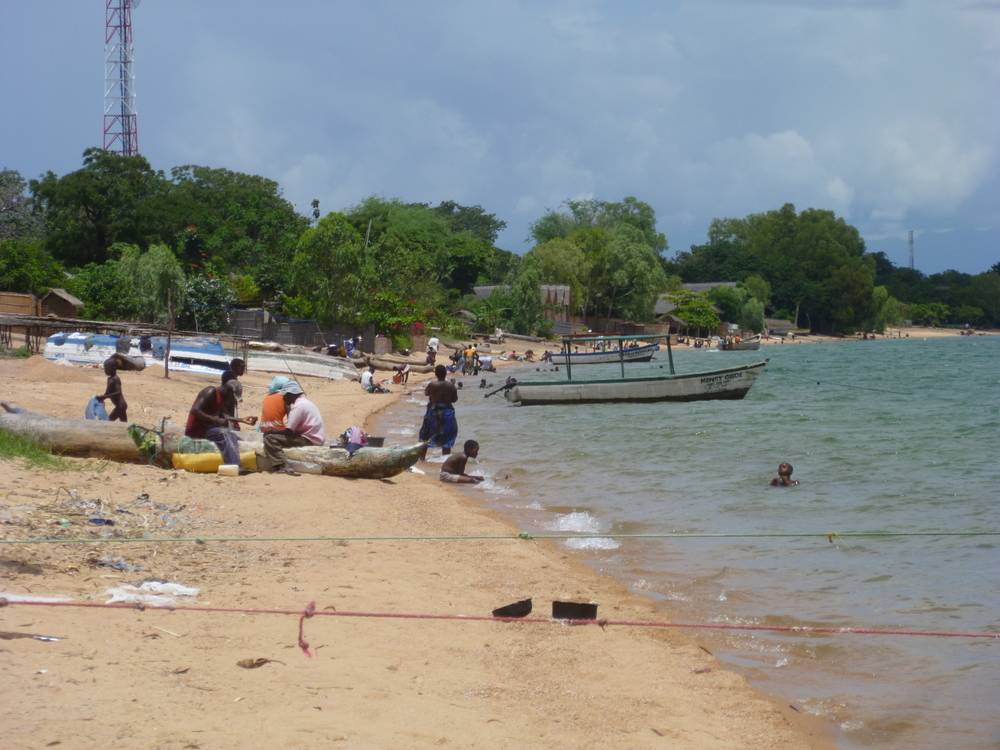







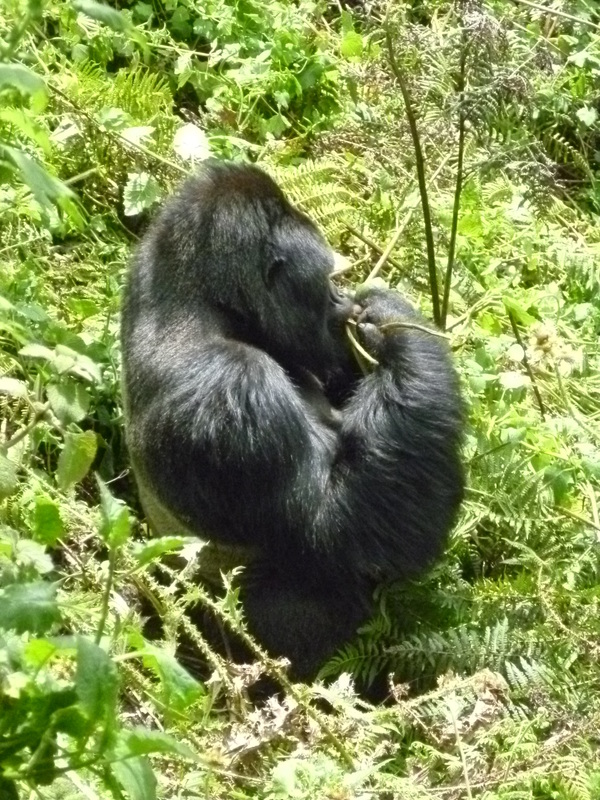
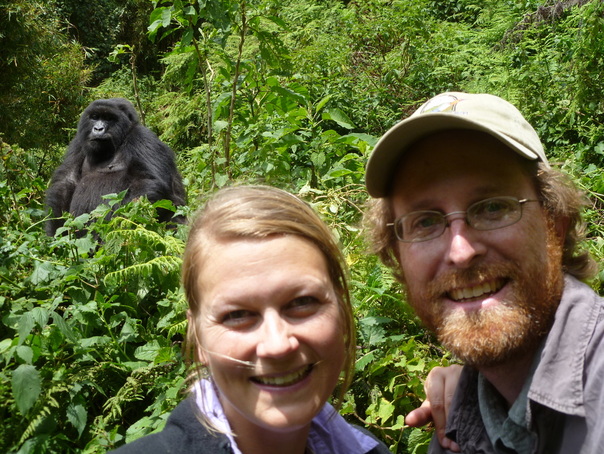

 RSS Feed
RSS Feed